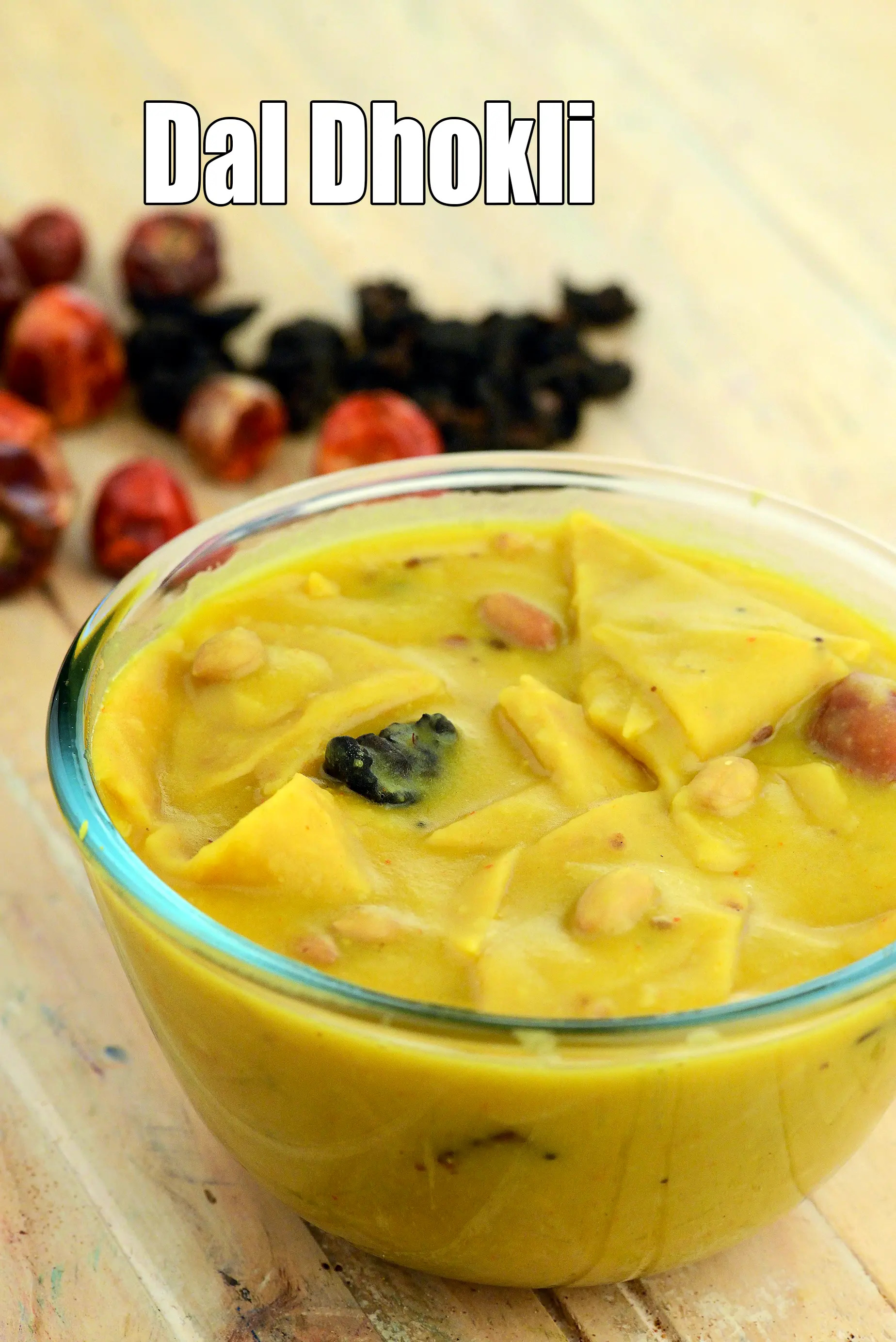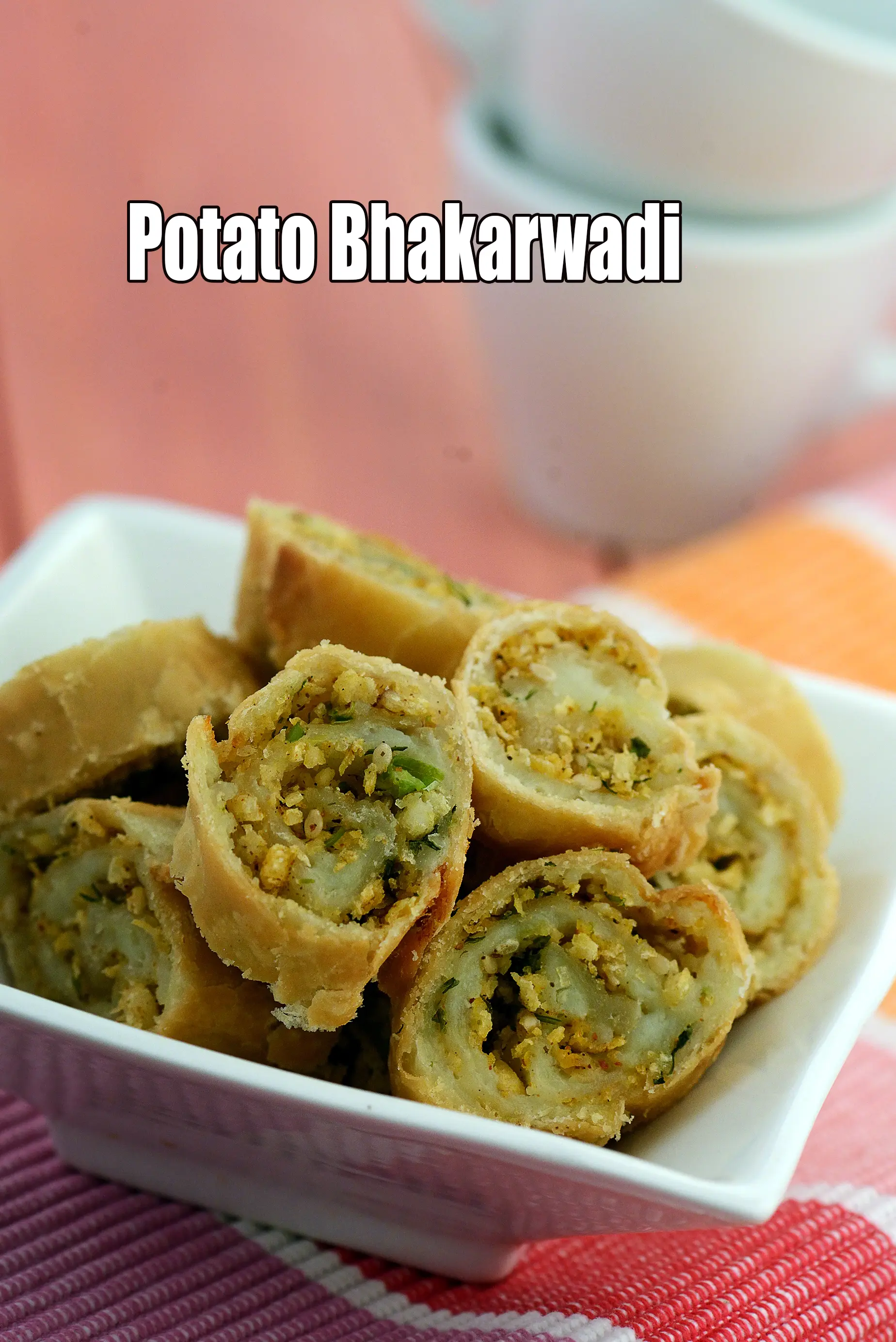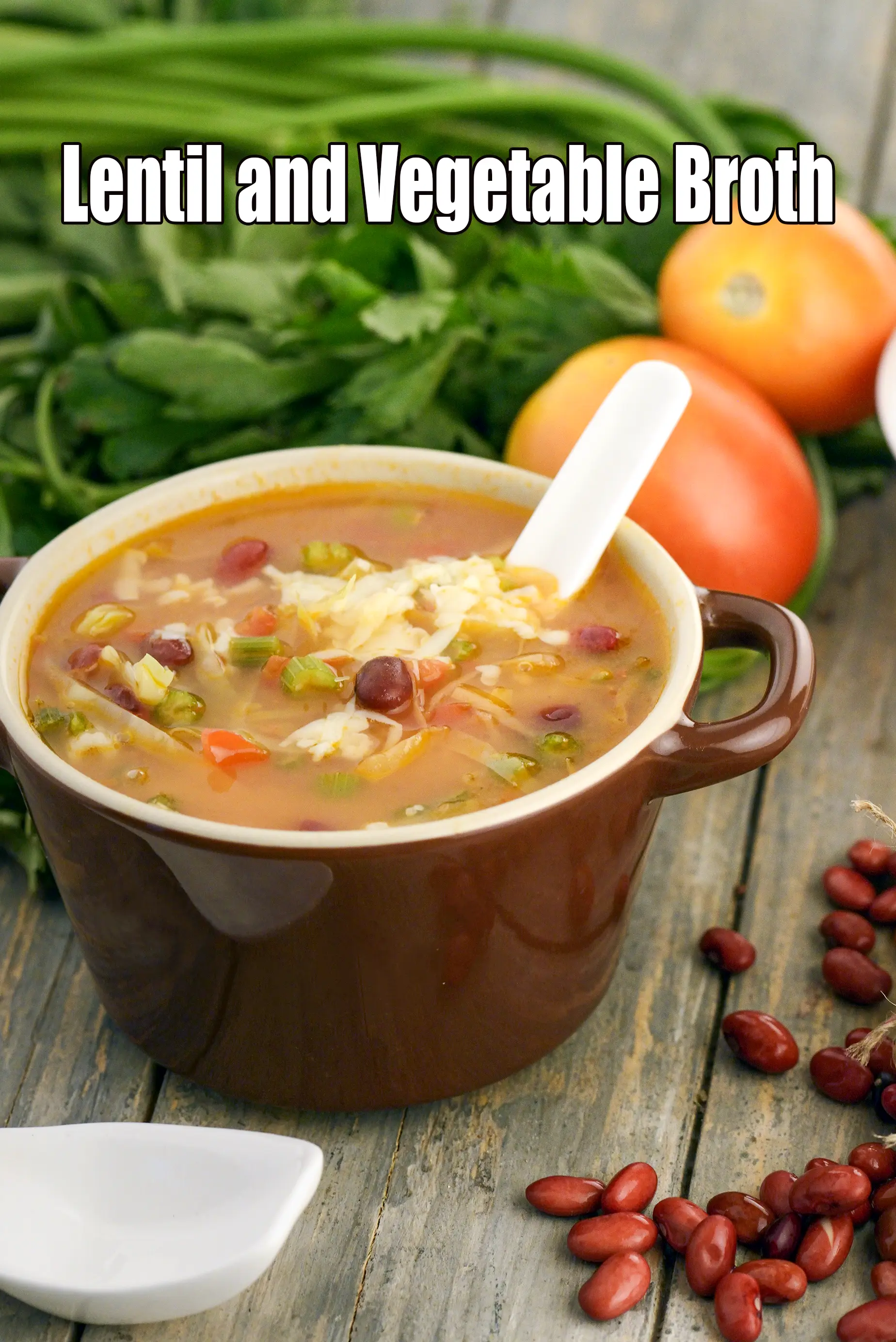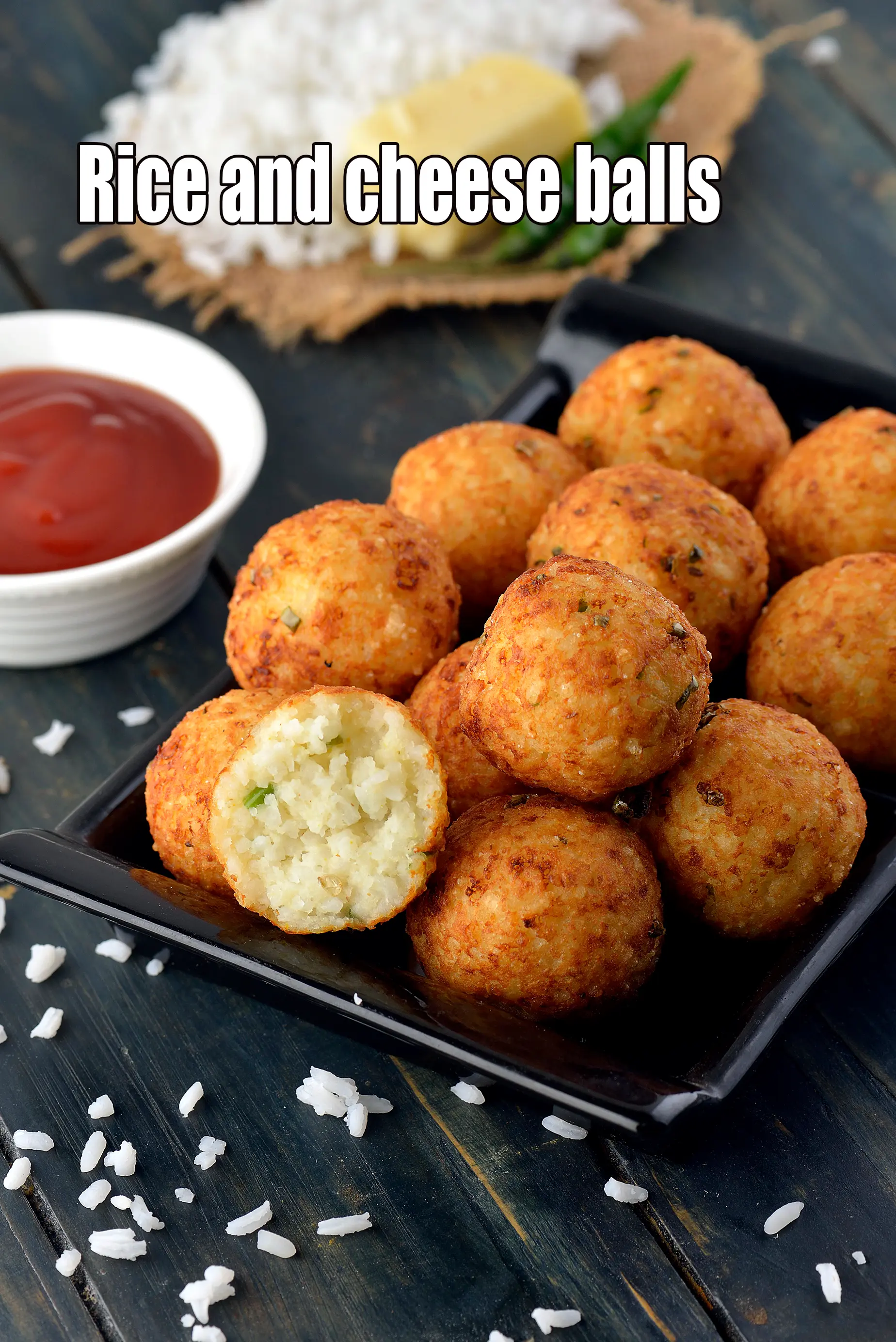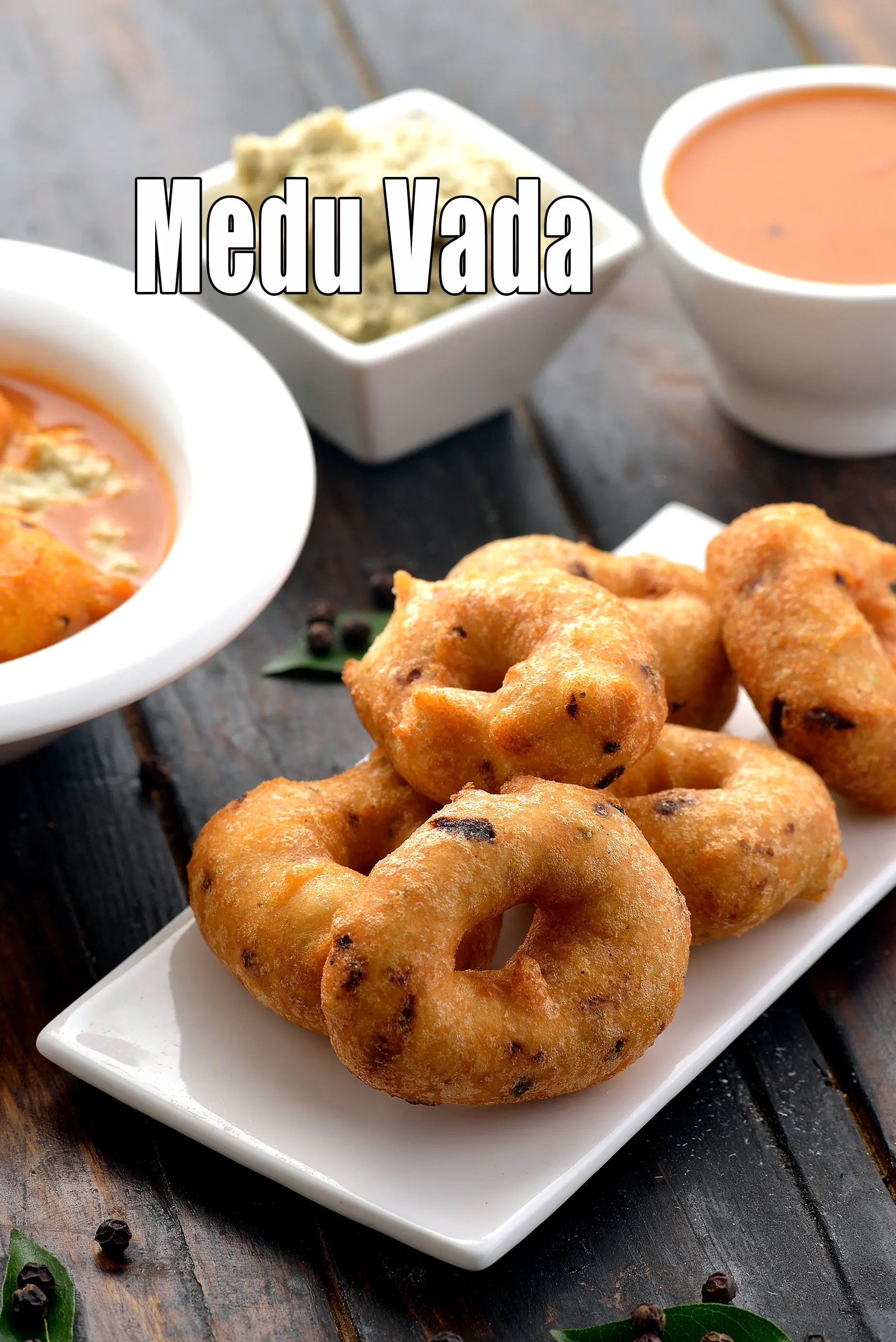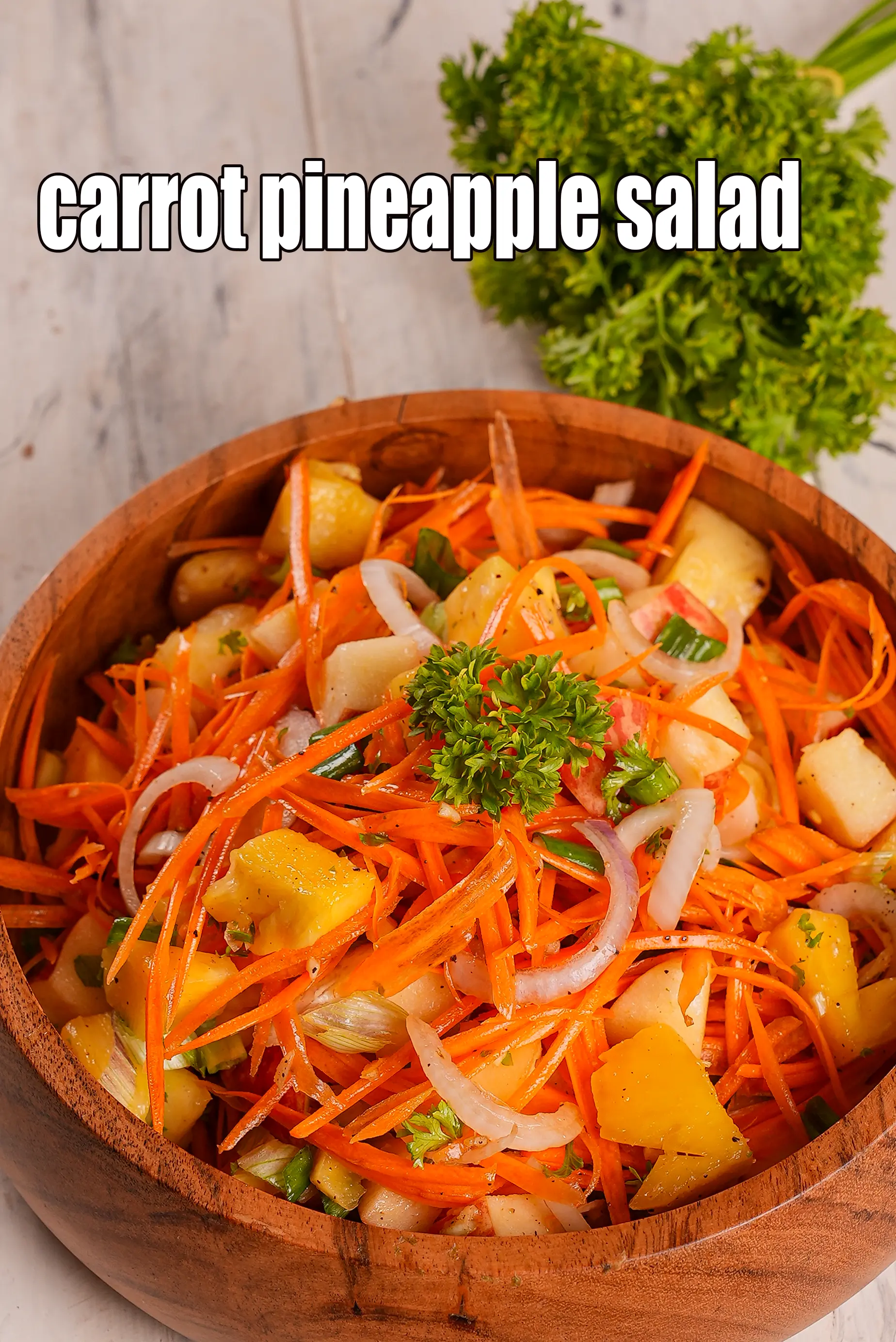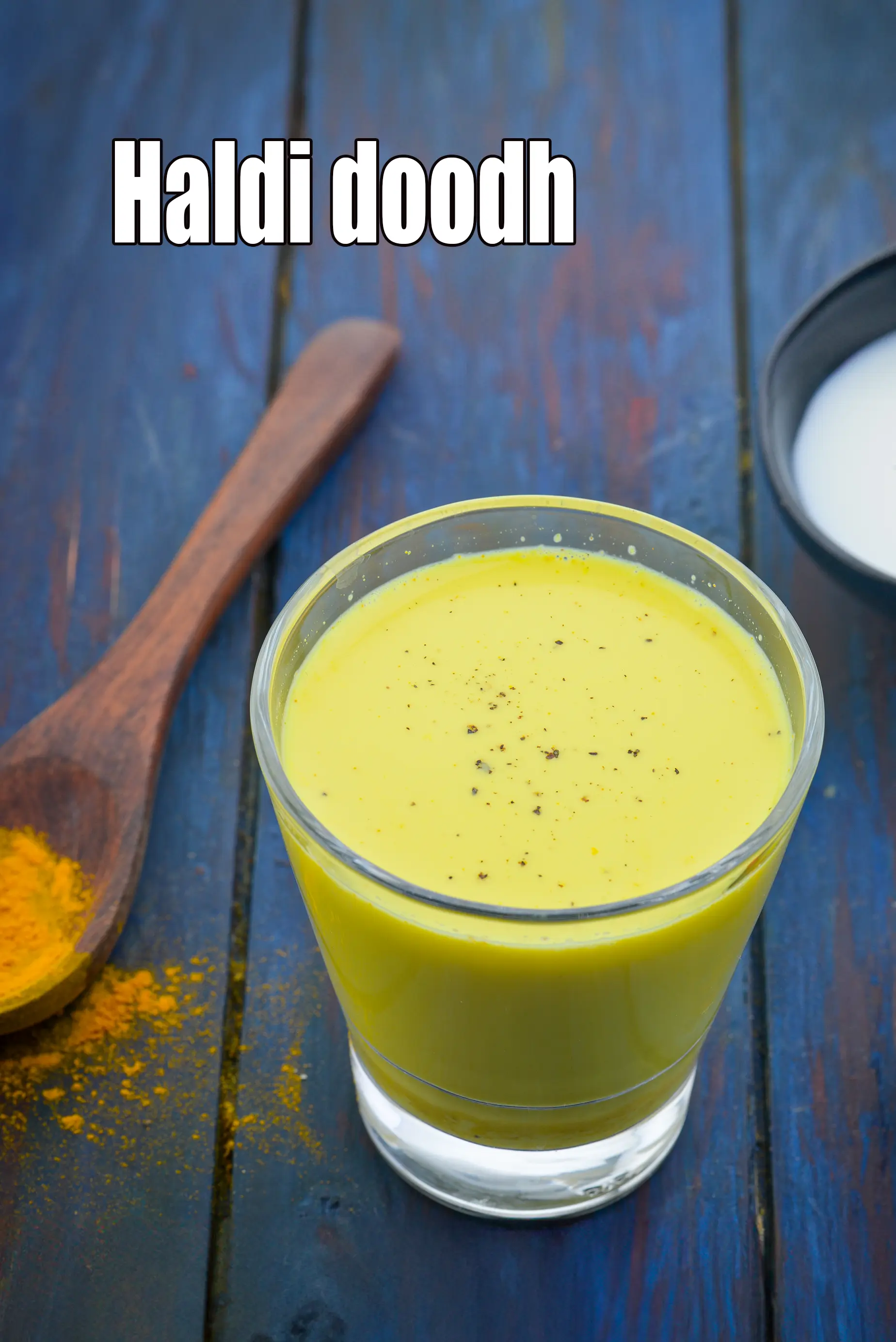Nutritional Facts of Hariyali Chawal, Coriander Rice Recipe, Calories in Hariyali Chawal, Coriander Rice Recipe
This calorie page has been viewed 6494 times
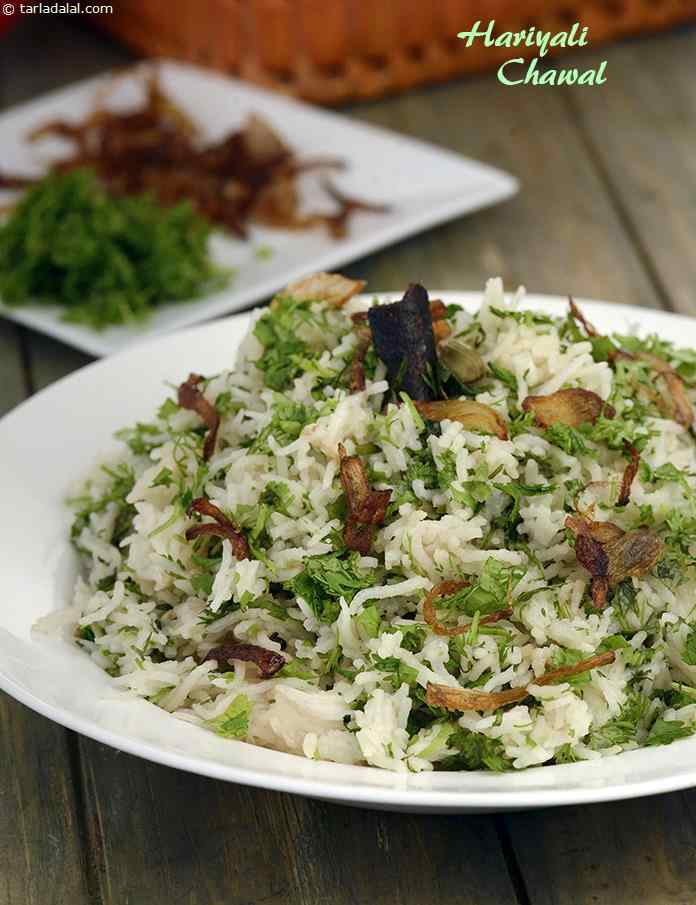
How many calories does one serving of Hariyali Chawal, Coriander Rice have?
One serving of Hariyali Chawal, Coriander Rice gives 302 calories. Out of which carbohydrates comprise 211 calories, proteins account for 20 calories and remaining calories come from fat which is 71 calories. One serving of Hariyali Chawal, Coriander Rice provides about 15 percent of the total daily calorie requirement of a standard adult diet of 2,000 calories.
Click on to view Hariyali Chawal, Coriander Rice recipe. Here is a simple, easy-to-prepare dish that has an inviting aroma and irresistible flavour! Hariyali Chawal involves simply cooking rice with an assortment of spices, before mixing in a generous dose of chopped coriander.
Interestingly, the coriander is not ground into a paste but simply chopped finely and mixed into the rice as soon as it is cooked. This gives it a really appetising look and unique flavour. The garnish of fried onions is as important as the coriander for the success of this dish, so spare a few minutes to prepare it.
Serve hot with Teen Ratna Dal and Gajar Gobhi Aur Aam ka Achaar .
Teen Ratna Dal
Is Hariyali Chawal, Coriander Rice healthy?
Yes, this is healthy. But restrictions apply to some.
Let's understand the Ingredients of Hariyali Chawal, Coriander Rice.
What's good in Hariyali Chawal, Coriander Rice.
Coriander (kothmir, dhania): Coriander is a fresh herb often used as a flavour enhancer in Indian cooking. It is mainly used as a garnish. This is the best way to use it - no cooking. This preserves its vitamin C content which helps to build our immunity and bring that sparkle to the skin. The antioxidants vitamin A, vitamin C and the quercetin present in coriander works towards strengthening our immune system. Coriander is a fairly good source of iron and folate – the 2 nutrient which help in the production and maintenance of red blood cells in our blood. Good for reducing cholesterol and good for diabetics. Read 9 benefits of coriander to understand details.
Benefits of Black Pepper ( kali mirch) : Black pepper has been identified to stimulate the digestive juices and enzymes in the gut thus lending a helping hand in maintaining digestive health. The antibacterial nature of black pepper helps to relieve cold and cough, especially when black pepper is ground and mixed with honey and consumed. kali mirch may help in maintaining normal blood sugar levels as it improves insulin sensitivity. So diabetics and weight watchers with high blood sugar levels both can benefit from black pepper. Kalimich is known to boost metabolism and promote fat cell breakdown. Yes, the piperine in it may help you overcome obesity, weight loss. See detailed benefits of black pepper, kali mirch.
Benefits of Cinnamon, dalchini, cinnamon powder : Cinnamon with its antioxidant power has the ability to reduce inflammation in the body and thus reduce the risk of various chronic diseases like heart disease, diabetes, cancer etc. Cinnamon since ages has been known to be beneficial for diabetics. Diabetes is a disease which occurs due to insulin resistance. Intake of cinnamon is said to reduce this resistance and instead improve insulin sensitivity in cells thereby helping to maintain normal blood sugar levels. cinnamon helps to reduce the blood cholesterol and triglyceride levels and thus prevents clot formation. See detailed benefits of cinnamon.
Cloves : Cloves are the immature unopened flower buds of a tropical tree. The four-pointed flower bud with a tapered stem measures 12-16 mm, and looks like a small nail. Indians have long used cloves to treat indigestion, diarrhoea, hernia, and ringworm, as well as athlete's foot and other fungal infections. India's traditional Ayurvedic healers have used cloves since ancient times to treat respiratory and digestive ailments and its oil for toothache. It has powerful antiseptic and mild anaesthetic actions. When boiled with water and gargled, cloves are a good antibacterial mouthwash, which can help to combat bad breath and relieve a sore throat. Cloves are said to restore the appetite, and hence recommended for people with digestive disorders. Cloves are effective at clearing up a number of skin disorders such as acne, sores or ulcers. It has antioxidant properties, owing to the compound eugenol in it. Eating cloves is said to be aphrodisiac.
Benefits of Cardamom, Elaichi : Cardamom has essential oil which is known to be effective is killing bacteria. This antimicrobial power of cardamom helps in relieving some stomach rpoblems like stomachache, cramps, flatulence etc. The sweet yet strong aroma of cardamom makes it perfect to control Halitosis (bad breath). The mineral manganese in cardamom may help in the lower blood sugar levels and good for diabetics. See detailed benefits of cardamom.
Onions (pyaz, kanda) : Raw onions are a very valuable source of vitamin C – the immune building vitamin. Along with other phytonutrients from onions, it helps to build WBC (white blood cells) which serves as a line of defence against illness. Yes, it’s a source of many antioxidants, the most important one amongst them being Quercetin. The quercetin in Onions promotes production of HDL (good cholesterol) and lowers total cholesterol in the body. The sulphur in onions act as a blood thinner and prevents blood clotting too. This in turn would lower blood pressure and good for heart, diabetics. Read the benefits of onions.
What's problem in Hariyali Chawal, Coriander Rice.
Rice : Here are the pros for rice. Rice is a great source of complex carbohydrates, which is an important source of energy for our body. Rice is low in fibre and therefore a good option for people suffering from diarrhoea. What's not good in rice. Foods like rice are high in Glycemic index are not suitable for weight loss, heart patients, diabetics as they affect the blood sugar control levels. See details of is white rice and parboiled rice good for you?
Vegetable Oils : To some vegetable oil is only soyabean oil, while some promote it as a mix of oils like soyabean, canola, sunflower, corn and other omega-6 rich oils. These are often cheaper options than many oils, but they are highly processed oils. They are undoubtedly not to be reached out for, whether you are looking for salad dressings, sautéing or cooking. The 5 best oils used in cooking are olive oil (low temperature short time cooking), avocado oil, canola oil, coconut oil and peanut oil. You must read the super article to find the facts of which oil is the healthiest avoid vegetable oil.
Note : 1 cup = 200 ml (standard cup available in the market). The weight in grams varies for each ingredient.
Can diabetics, heart patients and over weight individuals have Hariyali Chawal, Coriander Rice?
No, for diabetics, heart patients and weight watchers, there is too many carbs.
What is a healthier option than using Hariyali Chawal, Coriander Rice made from rice?
We suggest the following healthy khichdi like fada ni khichdi recipe, vitamin khichdi recipe, buckwheat moong dal and vegetable khichdi, bajra moong and green peas khichdi, barley khichdi and vegetable biryani from brown rice. All these recipes have ZERO usage of rice and portion control is suggested for diabetics.
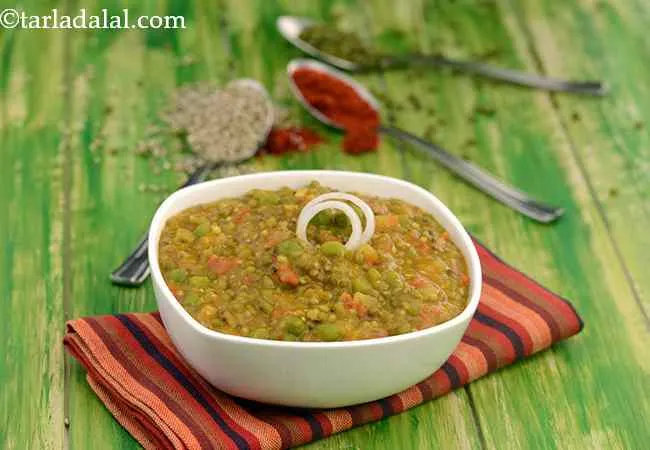 Bajra, Whole Moong and Green Pea Khichdi
Bajra, Whole Moong and Green Pea Khichdi
Can healthy individuals have Hariyali Chawal, Coriander Rice.
The issue here is usage of rice which is got tons of carb. So eat a bit of this.
8 Pointers to get healthy on a Indian diet.
1. Eat healthy and say yes to good home cooked food. Prefer whole grains like oatmeal, quinoa, buckwheat, barley and healthy flours like bajra flour, jowar flour, quinoa flour, wheat flour etc. rather than refined ones like maida. Have healthy Indian fats like ghee, coconut, coconut oil in your diet.
2. Opt out of junk food, packaged food, deep fried foods. Prefer steamed snacks and other non-fried snacks. Check out some Healthy Indian Snacks. Remember to eat small frequent meals through the day as that will keep you always full and prevent your blood sugar from dropping. By starving your body through some diet, will not help you one bit. In fact, dieting will make you binge on 2 to 3 meals which is not good.
Skip having Indian junk foods like pav bhaji, bata vada, pakoras, gulab jamun as they cause your body to have insulance resistance. The resultant is your body will store more carbohydrates as fats, causing storage of fat in the stomach causing a paunch and slowing down of our fat burning process. So its a bad cyle which causes you more more hunger and fatigue every time you eat junk food.
3. Have 4 to 5 servings of vegetables and 2 to 3 servings of fruit is a must. Follow the logic of a vegetable in each main meal of the day and a fruit in-between meals. Check out a few Healthy Indian Soups and Healthy Indian Salads recipes using this food group.
4. Cut down on sugar and salt in your diet and pick honey ( very small amounts) or dates to sweeten your food. Slowly cut the sugar habit as this is not going to happen over night. Sugar is also called white poison. It is a simple carbohydrate with zero nutritional value. On intake, sugar will cause inflammation of the body which will last for many hours. It will spike your blood sugar level and shut down the fat burning process. This also causes high blood sugar levels in your body. The development of prediabetes comes from uncontrolled eating sugar and refined food products for many years and the classic symptom is if you have excess belly fat. This leads to diabetes and further onwards to heart attack, high blood pressure, strokes, impotence and kidney damage.
Salt and blood pressure. Apart from stress and obesity, one of the main reasons for high blood pressure is excessive sodium and salt intake. Most people find it difficult to limit the amount of salt in their cooking, thinking it will affect the taste of their favourite dishes.
This is not true. Bajra and jowar are rich in potassium and critical for those with High Blood Pressure as it lessens the impact of sodium. Eating more Potassium Rich Foods will remove more sodium from your body through urine. So include the basic bajra roti and jowar roti in your daily diet to have with Lower Blood Pressure Subzis Recipes.
5. Befriend a few healthy seeds and nuts like chia seeds, flax seeds, sesame seeds, walnuts and almonds. Stress. The easiest way to kill your immune system is chronic stress.
6. Sprouts are called ‘living food’. They are high is most nutrients and easy to digest as well. Let them feature in your meals at least thrice a week. Also Read : All Benefits about Sprouts.
7. Exercise 45 minutes every day. No excuse. You can walk fast, run, do weights, play your favourite sport or go to the gym. No activity reduces muscle tissue which will lead to muscke loss and all kinds of problems with that. Workout builds immunity and keeps virus or bugs away.
8. Sleep early and get up early. Get your body into rhythm and it will function best. Sleep helps your body to recover and makes you look much younger. Also getting good sleep prevent muscle loss, builds immunity and keeps virus or bugs away.
Hariyali Chawal, Coriander Rice is high in
1. Phosphorous : Phosphorous works closely with calcium to build bones.
2. Vitamin C : Vitamin C is a great defence against coughs and colds.
Note : a recipe is deemed high in a Vitamin or mineral if it meets 20% and above the recommended daily allowance based on a 2,000 calorie diet.
How to burn 302 calories that come from one serving of Hariyali Chawal, Coriander Rice?
Walking (6 kmph) = 1 hour 31 mins
Running (11 kmph) = 30 mins
Cycling (30 kmph) = 40 mins
Swimming (2 kmph) = 52 mins
Note: These values are approximate and calorie burning differs in each individual.
| Energy | 302 cal |
| Protein | 4.9 g |
| Carbohydrates | 52.7 g |
| Fiber | 3.1 g |
| Fat | 7.9 g |
| Cholesterol | 0 mg |
| Vitamin A | 724.8 mcg |
| Vitamin B1 | 0.1 mg |
| Vitamin B2 | 0 mg |
| Vitamin B3 | 1.4 mg |
| Vitamin C | 14.5 mg |
| Folic Acid | 11.9 mcg |
| Calcium | 31 mg |
| Iron | 0.7 mg |
| Magnesium | 62.9 mg |
| Phosphorus | 117.4 mg |
| Sodium | 10.7 mg |
| Potassium | 93 mg |
| Zinc | 0.9 mg |
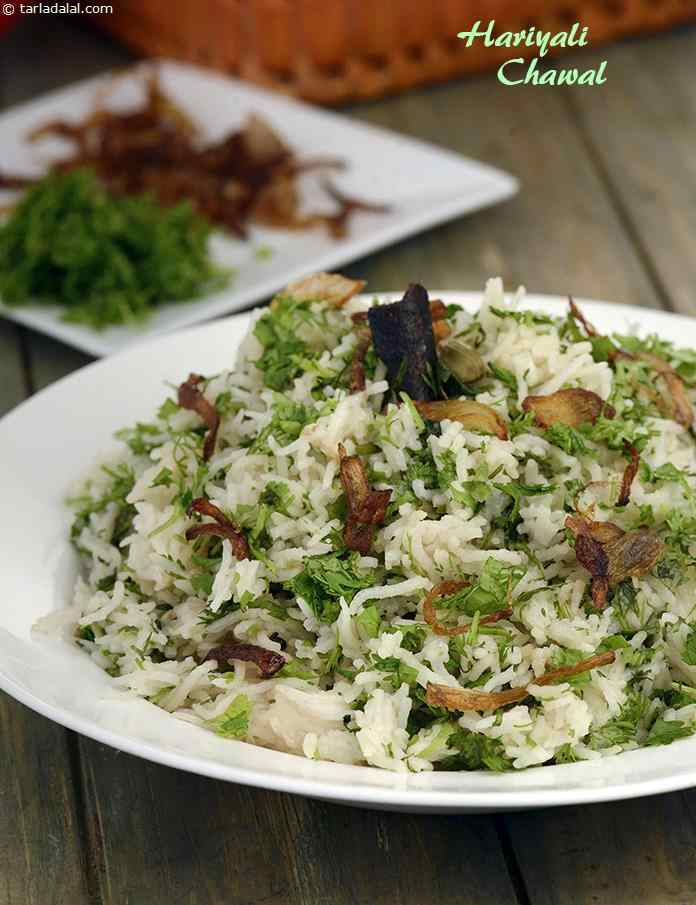
Click here to view Hariyali Chawal, Coriander Rice Recipe
Calories in other related recipes


